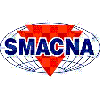The revised Title 24 code states that demand responsive controls and equipment shall be capable of receiving and automatically responding to at least one standards-based messaging protocol such as OpenADR. For example, in response to a DR signal, buildings larger than 10,000 square feet will have to automatically reduce their lighting power by at least 15 percent below the building’s maximum lighting power. The signal can come directly from a local utility, independent system operator (ISO), curtailment service provider, or aggregator, indicating a price or a request to modify electricity consumption, for a limited time period. All three major California utilities have announced support for OpenADR 2.0, which supports the automated demand response needs for residential, commercial, and industrial customers.
“Complying with Title 24 will be easy for building owners and operators because the OpenADR standard is already being designed directly into building management and lighting control systems,” said Barry Haaser, managing director, OpenADR Alliance. “Systems with OpenADR-compliant interfaces will be able to participate in AutoDR programs offered by utilities in California to better manage peak energy demand, reducing costs and overall energy usage.”
While demand response is not required in HVAC systems under the new code, it is one option for the required standards-based messaging protocol that is required. “If building owners are going to go through the effort of connecting their lighting into an automated DR system, it only makes sense for them to connect their HVAC systems as well,” Haaser said.
For more information, visit www.openadr.org.
Publication date: 7/22/2013
Want more HVAC industry news and information? Join The NEWS on Facebook, Twitter, and LinkedIn today!








